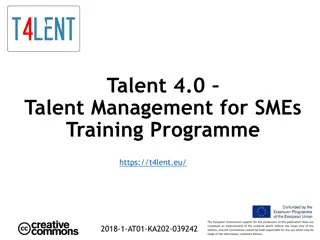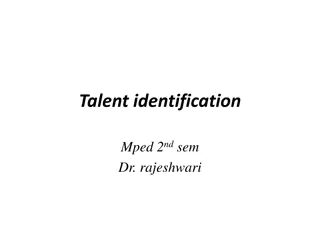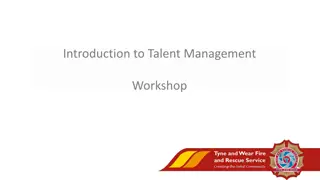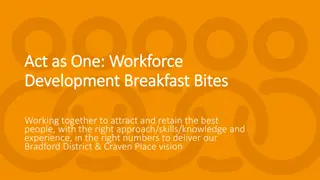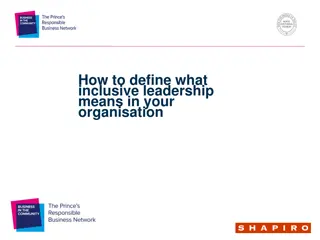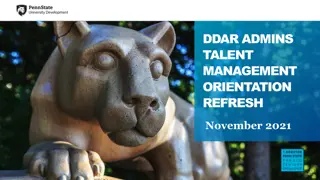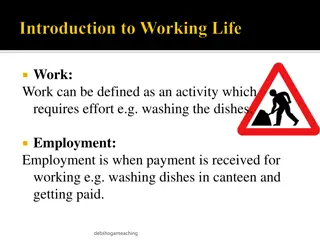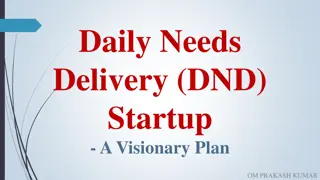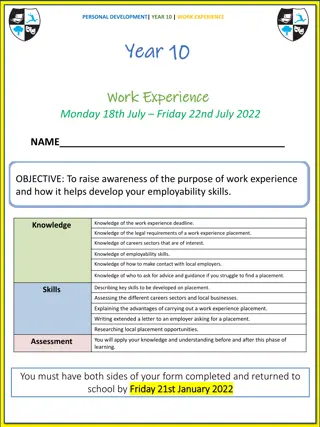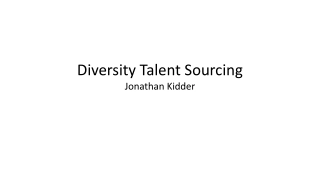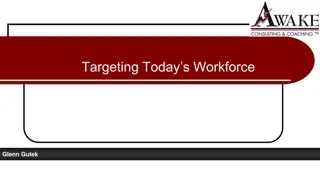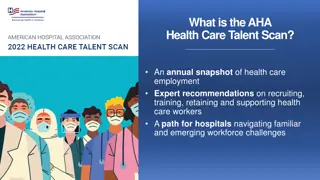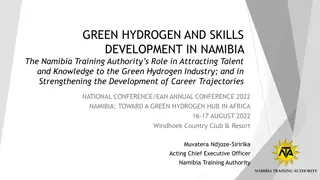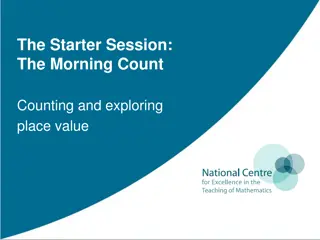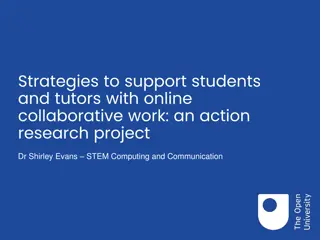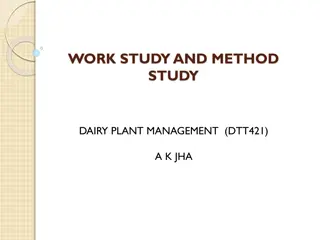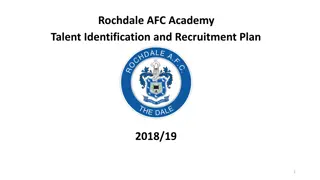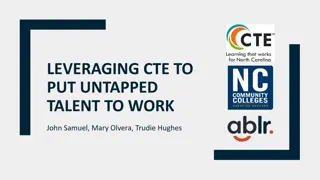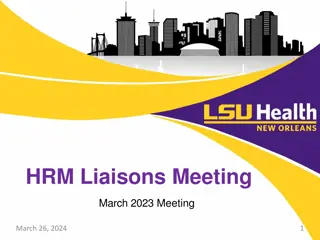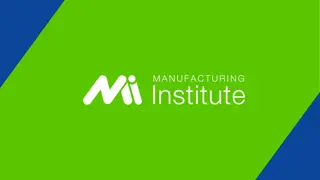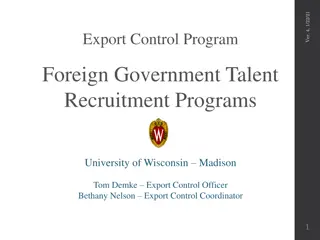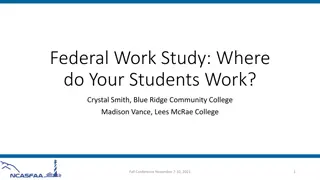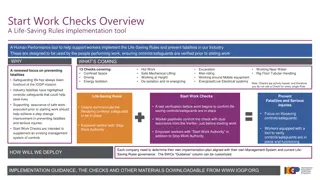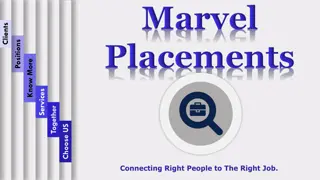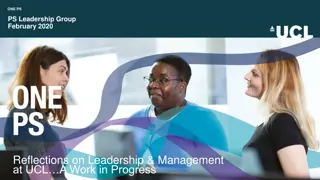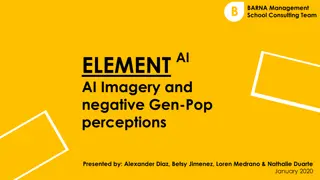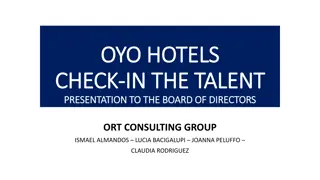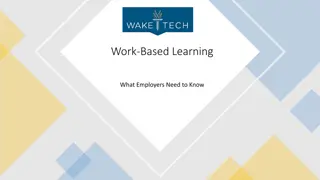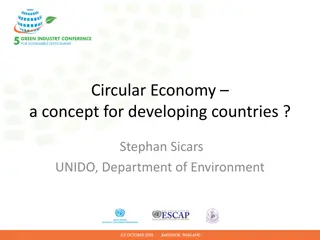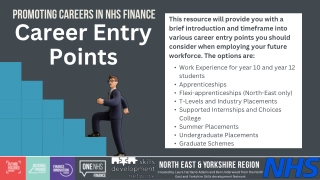Developing Talent in the Work Place with A&K: Insights and Strategies
Explore the comprehensive approach taken by A&K, a prominent corporate law firm in Kenya, towards developing talent in the workplace. The agenda covers aspects like retention strategies, training cycles, and the importance of employee engagement. Key takeaways emphasize the significance of integrating learning and development programs with employee engagement systems for effective retention. A&K's expertise in various practice areas and its commitment to employee growth and development make it a leading firm in East Africa.
Download Presentation

Please find below an Image/Link to download the presentation.
The content on the website is provided AS IS for your information and personal use only. It may not be sold, licensed, or shared on other websites without obtaining consent from the author. Download presentation by click this link. If you encounter any issues during the download, it is possible that the publisher has removed the file from their server.
E N D
Presentation Transcript
DEVELOPING TALENT IN THE WORK PLACE Sean Massingham, Head of Knowledge Management 23/03/2018
Agenda 2 About A&K Takeaways Development as a retention strategy? The Virtuous Training Cycle
A&K 4 A&K is generally considered the leading corporate law firm in Kenya, and is the largest full-service corporate law firm in East Africa with close to 100 lawyers. A&K has developed specialist expertise in several practice areas, including corporate and commercial law, mergers and acquisitions, private equity, energy, infrastructure, project finance, real estate, competition, capital markets, banking and finance, intellectual property, tax and dispute resolution. A&K operates Africa-wide, handling deals in several countries across Africa, both in its own capacity and in collaboration with ALN firms across the continent. A&K has offices in both Nairobi and Mombasa, Kenya s two main commercial centers, providing a broad range of legal services in both.
A&K Employment Experts 5 Rosa Nduati-Mutero Partner Faith Macharia Okaalo Senior Associate Sonal Sejpal Director
Takeaways 6 What? At the beginning?
Takeaway 1 7 Learning and development will only be a positive retention tool if the organisation has the rest of its employee engagement systems purring
Takeaway 2 8 Giving employees training and development opportunities should be given as much careful consideration as the decision about their bonus
Takeaway 3 9 To be successful a learning and development regime needs to: be a virtuous cycle of seeking input, solving problems and checking back in to determine progress make the recipients (and their supervisors) accountable for growing and changing in response to the training Identify & Analyse needs Determine & Design Solution Review & Evaluate Deliver or Administer Learning activity
Ever heard anyone say this? 11 The pay was lousy . My boss was a micromanaging slave driver . The company s mission didn t align with my personal values . The job was boring . ..but I stayed because of the training?
Development a destabilising force? 14 A focus on development can, done poorly, actually result in negative retention outcomes and create team instability.
Really? 15 Pitfalls Lack of communication leads to the appearance of arbitrary allocations of resources No clear guidelines leads to jealousy of people not given opportunities. That s unfair!
The virtuous training circle 17 Performance appraisal Personal Need identified Ensure Type of development identified Accountability for outcomes achieved Give the person space to learn Ensure their supervisor is involved
Wasted training? 18 Lots of training is done that is then ignored or forgotten Why? The recipient doesn t accept the need for change or improvement
How? 20 Create a process to obtain this information Appraisals 360 s Surveys of co-workers As HR/L&D look for patterns, gaps, special needs Ask the person!
Needs vs Wants 21 Development of people must be linked to specific needs either theirs or the organisations. The needs of their current job is important but only part of the full story. The organisation should also have goals for its influencing its employee s behaviour and expectations
Create a logical structure 23 Pick relevant topics Use great trainers internal or external Make the development an experience Give people the incentive to attend try not to make it mandatory
Focus on the Future 24 Identify your high potential employees (while avoiding the jealousy pitfalls I mentioned earlier) and train them to rise to the next level Look at the skills your people will need in the future and start to develop those skills now
Involve employees supervisor 26 Ensure all supervisors understand that development of their people is a priority Hopefully this is already their priority!
Set Clear Expectations 27 Make the expectation of positive change and development explicit on attendees Ensure the supervisor understands what the training is meant to achieve so they can focus and reinforce the messages
Train the leaders 28 Senior people often believe training is something their team needs not themselves Convince the supervisor that they need growth and development too! People seeing their boss acknowledging the need to change and grow is very powerful
Get them focussed 30 Give the attendee space to be present No work requirements hanging over their head treat this like holidays No technology remove laptops (and maybe even phones) from people when entering the room Determine whether in office or out of office each has its benefits
Challenge them! 31 Give the attendees the challenge to manifest evidence of their development or what they have learned to their colleagues and supervisors
Create an accountability process 33 Need a process in place to: Let the person s supervisor know that the employee is being trained and what the purpose of the training is Ensure that the employee knows that their supervisor knows. Involve the supervisor in post training reflection and exercises to embed the knowledge obtained or change suggested
Make people care about outcomes 34 Link the employees successful development/requirement to change behaviour to the bonus of both supervisor and employee Check in the employee development progress at the start of the following year
Questions? 35
Sean Massingham, Head of Knowledge Management and Performance Improvement T +254 (0) 20 364 0 331 E mst@africalegalnetwork.com NAIROBI Anjarwalla & Khanna The Oval, 3rd Floor Junction of Ring Road Parklands and Jalaram Road PO Box 200-00606, Sarit Centre, Nairobi, Kenya T +254 (0) 20 364 0000, + 254 (0) 703 032 000 E info@africalegalnetwork.com W: www.africalegalnetwork.com MOMBASA Anjarwalla & Khanna SKA House, Dedan Kimathi Avenue PO Box 83156 80100, Mombasa, Kenya T +254 41 2225090/6 E mba@africalegalnetwork.com BOTSWANA | ETHIOPIA | KENYA | MADAGASCAR| MALAWI | MAURITIUS | MOZAMBIQUE | NIGERIA | RWANDA | SUDAN | TANZANIA | UGANDA | ZAMBIA ASSOCIATE FIRM IN SOUTH AFRICA | REGIONAL OFFICE IN UAE


